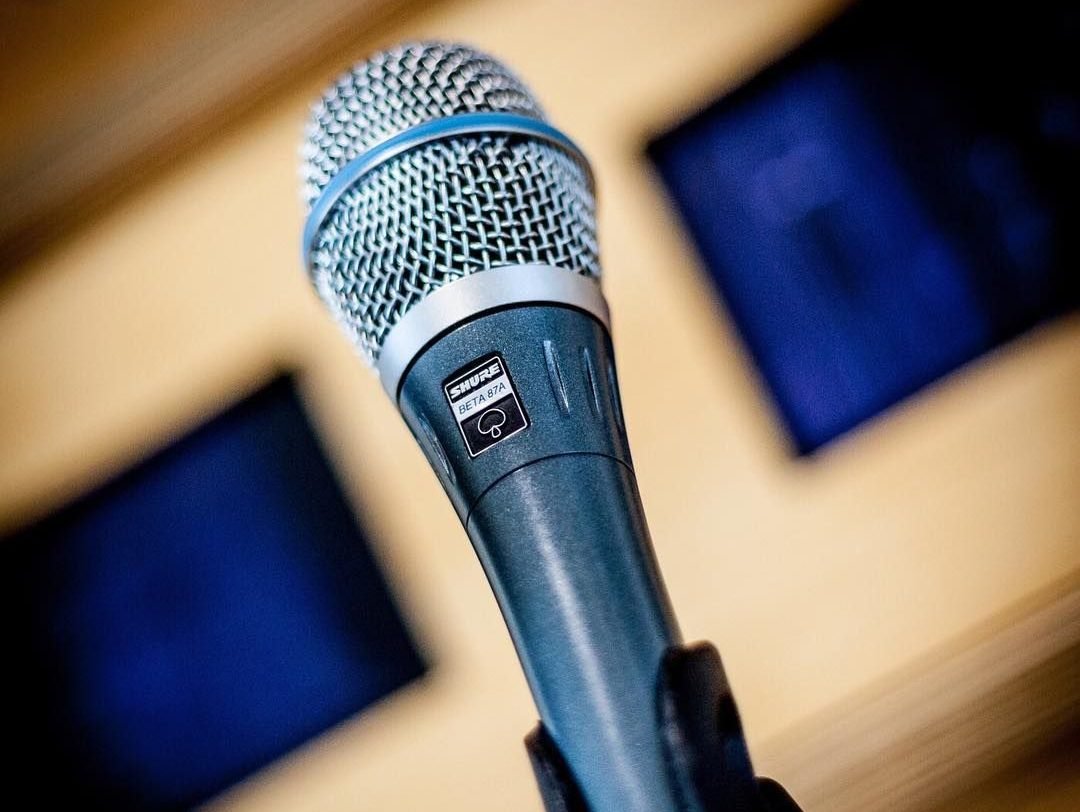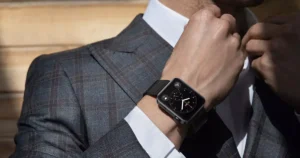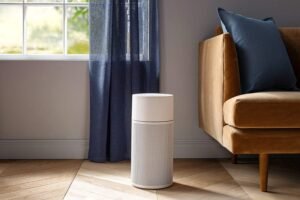
This is the review of the comparison between two microphones from two popular brands such as the Blue and the Shure. The comparison here between the Blue en.CORE 300 and the Shure Beta 87A. There is around fifty dollars difference in their price range which brings the difference in their features and performances too. To know which one is better than the other, go to the detailed review.
 |  |
| Blue en.CORE 300 | Shure BETA 87A |
| BUY NOW | BUY NOW |
| PROS | PROS |
| Good for vocals. Good for live performances. Can be used as a recording mic. Sounds crisp and clear. | Balanced frequency response. Durable like all Shure’s microphones. Superior gain before feedback. |
| CONS | CONS |
| It has strong proximity. | The highs are a bit brittle. |
SPECIFICATIONS:
| HEADER | BLUE EN.CORE 300 | SHURE BETA 87A |
| Brand | Blue Microphones | Shure |
| Product Line | Blue Microphones en.CORE | Shure Beta |
| Model | 300 | 87A |
| GENERAL | BLUE EN.CORE 300 | SHURE BETA 87A |
| Manufacturer | Logitech | Shure Inc. |
| Recommended Use | Professional audio | Professional audio – vocal |
| MICROPHONE | BLUE EN.CORE 300 | SHURE BETA 87A |
| Microphone Technology | Condenser | electret condenser |
| Microphone Operation Mode | cardioid | mono |
| Sensitivity | 11 mV/Pascal | -52.5 dBV/Pascal |
| Microphone Power Source Voultage (DC) | ||
| Frequency Response | 40 Hz – 20kHz | 50 Hz |
| Signal-To-Noise Ratio | 70.5 dB | |
| Total Harmonic Distortion (THD) | ||
| Max Sound Pressure | 146 dB SPL | 140.5 dB |
| Audio Input Details | Output Impedance 25 Ohm | Super cardioid – 50 – 20000 Hz – Output Impedance 150 Ohm |
| Connectivity Technology | Wired | Wired |
| AUDIO SYSTEM | BLUE EN.CORE 300 | SHURE BETA 87A |
| Type | Microphone | Microphone |
| Recommended Use | Professional audio | Professional audio |
| Specific Applications | vocal | vocal |
| Additional Functions | ||
| Controls | ||
| DIMENSIONS & WEIGHT | BLUE EN.CORE 300 | SHURE BETA 87A |
| Diameter | 2 in | 2 in |
| Width | 2 in | |
| Depth | 2 in | |
| Height | 7.9 in | 7.6 in |
| Weight | 13.44 oz | 7.3 oz |
| FEATURES | BLUE EN.CORE 300 | SHURE BETA 87A |
| Features | Hand-selected condenser capsule tuned for stunning detail and powerful vocals. Innovative reinforced chassis to protect the capsule while allowing maximum airflow for smooth, open sound. Blue’s proprietary phantom power circuit delivers consistent tone and minimal noise. Stage-ready with heavy-gauge barrel construction and hardened metal-plated finishes. Cardioid polar pattern delivers substantial off-axis noise rejection while maintaining presence. | Smooth, wide frequency response with slight presence rise. Uniform cardioid polar pattern for maximum isolation. Minimum off-axis tone coloration. Low-frequency roll-off compensates for proximity effect. Frequency response: 50 – 20, 000 Hz. |
Detail Review:
INTRODUCTION:
Blue en.CORE 300
The Blue en.CORE 300 is a condenser microphone from the Blue en.CORE series. This microphone is retailing for around two hundred dollars currently on Amazon. This microphone has got really design and also, it sounds really good for the price.
Shure BETA 87A
The Shure Beta 87A comes in at about 250 dollars and there are actually two versions of this microphone. The Beta 87A is actually a super-cardioid handheld condenser microphone but there is an 87C version which is just the regular cardioid version.

DESIGN:
Blue en.CORE 300
When we’re dealing with live performance microphones, durability is really going to be a concern because oftentimes you are setting up or tearing down, this mic is going to be maybe on the road, and you want something that’s going to last and something need to drop, and not have to worry about breaking. When I saw pictures of this mic before I got it I was actually pretty concerned about the durability, just seeing the way the grille looked, the way it tapers down to a more slender bottom of the grille and I was afraid that if he dropped it that the grille could actually break the mic capsule right off. But if you take a closer look at it, you’ll see there’s actually a reinforcement ring that is directly connected to the grille and makes it doesn’t move at all.
Shure BETA 87A
When it comes to the build and design of this microphone, it’s honestly fantastic, it feels like every Shure product out there just feels like it’s built to last. In the box when you purchase the Shure Beta 87A you will get a nice Shure leather carrying bag, you will get these standard Shure microphone clip as well as a microphone stand adapter, you will get a nice Shure branded velcro cable tie, you will get just a gigantic sticker, you will get some documentation, and you will get the handheld condenser super-cardioid microphone itself the Shure Beta 87A. The clip and cable you get are very nice that it makes the mic look very nice when mounted on the mic stand.

FEATURES:
Blue en.CORE 300
As far as the polar pattern and frequency response of the en.CORE 300, the polar pattern here is a cardioid mic which means it’s going to pick up most of the sound directly in front of the mic and a little bit of sound from the sides and then up from the back. This is good for rejecting feedback from stage monitors if you’re using a monitor speaker in front of you, this mic isn’t going to pick up much sound from that and that’s what would cause feedback. So, pretty basic cardioid pickup pattern.
Frequency response is really extended beyond what a typical dynamic mic can do. Typically dynamic mic like SM58 or even en.CORE 100 or 200, we’re going to drop off pretty drastically. On the en.CORE 300, there’s a slight dip around 10 kilohertz but then it jumps back up and remains pretty flat up beyond 15 kilohertz. For reference, the human ear can only hear up to about 20 kilohertz, so this is going up to the upper limit of what the human ear can even hear, and that’s picking that up.
Shure BETA 87A
As far as the specs on this microphone, the Shure Beta 87A is a handheld electric condenser microphone with a super-cardioid polar pattern. This features a frequency response from 50 Hertz to 20 kilohertz. This has an EIA rated output impedance of a hundred and fifty ohms but its actual output impedance is a hundred ohms. This has a sensitivity of negative 52.5 decibels, a maximum SPL of 140.5 decibels, a signal-to-noise ratio of 70.5 decibels, a dynamic range of 117 decibels, a self-noise of 23.5 decibels, and this microphone does feature an XLR connector.
As per the frequency response graph, there is a little bit of a drop-off in the low end in general, and there is a bit of a boost in the high end. I do wish that this had a quieter noise floor than 23.5 decibels as I feel like that’s a little too loud especially for a 250 dollar microphone. I mean the noise floor is there, you can hear it but it’s not atrocious. One thing I do want to mention is the super-cardioid polar pattern. If you have a standard cardioid microphone, you want to put a loud sound source directly behind it.
With a super-cardioid polar pattern, you actually want these sound that’s loudest, so like a person talking in the room, if you’re podcasting or speakers pointed back to you like monitors, if you’re in a live situation you actually want those to hit the microphone at about a hundred and twenty degrees. Aside from the front being sensitive, there is actually a part of a super-cardioid microphone directly behind it, that is more sensitive than the sides.

PERFORMANCE:
Blue en.CORE 300
A condenser mic naturally has a disadvantage at hiding plosives and the sound is picking up because it’s more sensitive, and because it has extended frequency response. So, it’s actually picking up more of what it’s really hearing, and that sensitivity in the case of plosives is actually a disadvantage compared to a dynamic mic. A dynamic mic is not as sensitive, and it’s also not picking up high frequencies, so although it sacrifices some of the clarity, it’s not picking up so much in plosives.
The way to work around this is just learning proper mic handling techniques. So, learning how far away from your mouth to hold the mic, learning how to properly pronounce plosives when you say them, just learning how just basic singing techniques, and microphone handling techniques will allow you to avoid any problems of having a more susceptibility to picking up plosives.
Shure BETA 87A
One of the biggest things that stood out to me about this microphone when I was testing it is how good it does with handling noise. I could pass this back and forth and it does not sound bad at all. So, it’s really nice that this is good at it and it’s a very big plus for people that want to use this for live vocals. The noise rejection was good, I thought that it was definitely better than your average condenser microphone. 
WHICH ONE IS BETTER?
In my opinion, the Shure Beta 87A is better than the Blue en.CORE 300 but when it comes to the price of this microphone, I do think it is pretty expensive especially for someone who wants to get a microphone for podcasting. In such a case, you can go to the Blue en.CORE 300. But I would say the Shure Beta 87A is pretty much exclusively for live vocalists. If you want a microphone for podcasting in home studios then you can go for the en.CORE 300 because in the case the en.CORE 300 is better.
Expert Reviews of Blue en.CORE 300:
By gearank.com
This is a versatile mic that will serve you well for both live performance and recording – some say they’ve even mid clean amps with it. So if you want a relatively transparent microphone that you can use in multiple settings then this is a great option for you.By bajaao.com
The Blue enCORE 300 Condenser Vocal Performance Microphone has its roots in Blue’s legendary tuned condenser studio microphones. The enCORE 300 mic’s Aria Condenser Capsule is hand-selected and tuned for open, detailed, and present sound…By Sound On Sound
When I opened the box and first saw the Blue Encore 300 capacitor mic, I thought there was something very familiar about the shape… then realized that the last time I was in Seattle, I climbed up something very similar to…By reverb.com
The Blue enCORE 300 Condenser MicrophoneåÊreproduces vocals and speech with great detail, presence, and minimal handling noise. The enCORE 300 features Blue’s Aria condenser capsule and its cardioid polar pattern…By filmtools.com
The Blue Microphones enCORE 300 Dynamic Cardioid Handheld Microphone 754508 is the flagship microphone in the enCore series of tuned condenser mics from Blue. The enᄋCORE 300’s Condenser Capsule is hand-selected and…Expert Reviews of Shure BETA 87A:
By microphonegeeks.com
There are actually two variations of this mic: 87A & 87C. The first one is a super-cardioid and the second one is a cardioid. The latter has a bit less proximity…By gearank.com
Although not well suited to hard rock singers and rappers who like to cup the mic, it is very well-liked by most other types of singers.By guitarfella.com
Shure’s handheld stage microphones have reached legendary status and, while these are usually dynamic in nature, the Illinois brand offers a handful of impressive handheld…By justinreves.com
In my humble opinion, just like a guitarist or most any other musician has their own instrument, I believe that a vocalist should have their own mic. Why is that? Because everyone’s voice is different…By thoman.de
Because of its high precision and attention to detail as well as its natural vocal reproduction, the Beta 87 was already the first choice of artists and sound engineers…




